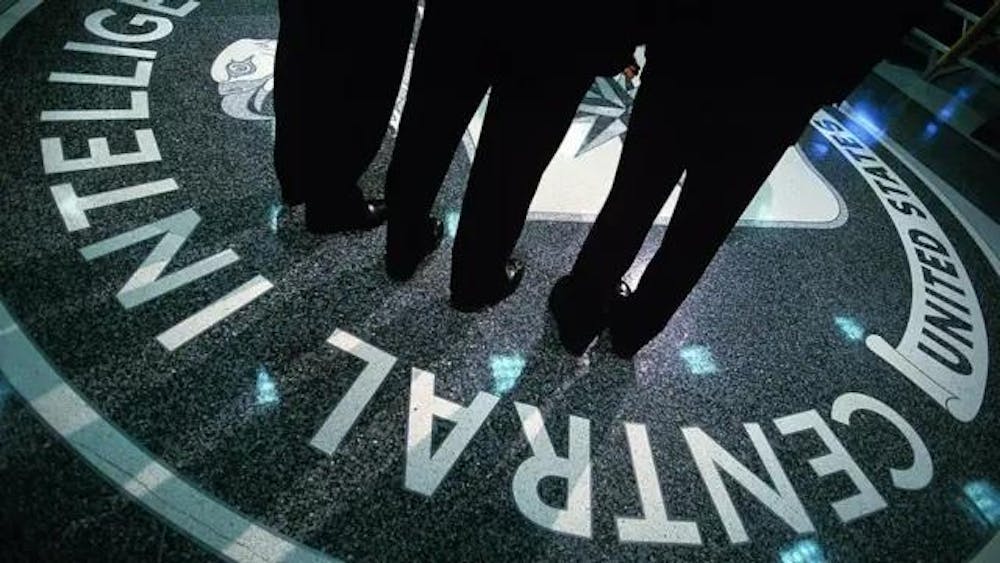A balance sheet is a statement of assets, liabilities and the capital of a business. To put it simply, a balance sheet reveals a company’s levels of cash, debt and equity. Here’s how it works:
Assets = liabilities + shareholder’s equity. Any journal entry must ensure that this equation balances out.
Debits record what comes into the entity. Credits record what goes out or what the entity owes.
Balance sheets exist so investors can see the financials of a company. But don’t you think it is interesting that the Central Intelligence Agency (CIA) is not required to release a balance sheet? They receive $17.5 billion from the federal government annually, and not a single living soul outside of the operation will ever know where that money went or how it was recorded on their financial statements.
The CIA has been privately held since its inception in 1947 but, as a hopeful investor, I look toward the horizon. And so, if the CIA ever becomes a publicly traded stock, it is my duty as a diligent potential shareholder to find out what its balance sheet has looked like over its history so I can make a more educated investment decision, should the opportunity ever arise.
1947
During World War II, Nazi scientists developed lethal technologies categorized as biowarfare. This included genetically modified mosquitoes with yellow fever, injections that could kill individuals in seconds, several types of noxious gasses and more. At the Nuremberg Trials, several Nazi scientists were sentenced to death. Others, however, were a bit more lucky.
The CIA started to develop biomedical weapons on their own, but they wanted to know more. So, instead of idly watching the conviction of renowned Nazi killers, they hired them to work for the U.S. government. Because their area of study was thought to be dubious in America, the CIA set up several sites in Europe where they could develop deadly bioweapons and test them on unsuspecting people or captured USSR spies.
Balance sheet journal entry
Here, there is an increase in non-cash assets. But remember, the equation must balance out. In this case, liabilities would also increase because the CIA hired massive security threats. Using the Generally Accepted Accounting Principles (GAAP), the journal entry would be as follows:
Debit - Nazi Scientists receivable.
Credit - National Security Crisis payable.
Indeed, shareholder value would have increased with the hiring of Nazi scientists with a promise of solid future earnings.
1954
In 1954, a coup d’etat in Guatemala was organized and successfully executed by President Dwight Eisenhower and the CIA in 1954. Guatemala was a large supplier of U.S. Bananas. However, that trade agreement was jeopardized in the 1950s when Guatemalan ruler President Arbenz fought to expand land ownership and distribute basic human rights to citizens. This meant that private land ownership would increase, causing U.S. influence and banana supply to decrease. The CIA organized a coup to ensure that human rights were suppressed in Guatemala and keep their bananas safe, finding Carlos Castillo Armas — a military leader — to successfully execute their plan. In June of 1954, the CIA overthrew Arbenz and replaced him with a proxy government.
Balance sheet journal entry
Debit - Dictators receivable.
Debit - Bananas receivable.
Credit - Coups payable.
Credit - Human Rights.
By suppressing human rights and implicitly killing hundreds of Guatemalan citizens, the CIA was able to protect a 14 million-dollar annual revenue stream. Subsequently, we can assume their stock price would have risen at that time.
1961
In January 1961, the CIA actively assisted in the assassination of Patrice Lumumba, the democratically elected leader of the Republic of Congo who was seen as an ally to the USSR. The CIA was effectively able to assist in his assassination and destabilize the Congo’s government.
Balance sheet journal entry
Debit - Imperialism receivable.
Credit - Assassination payable.
When the documents relating to Lumumba’s assassination were declassified in 2000, investors saw the share price of the CIA as undervalued. Why? The CIA had more assets and fewer liabilities than investors knew about, and the stock was therefore underpriced and subsequently gobbled up by investors.
1961
The CIA organized and executed a failed coup in Cuba known as the Bay of Pigs Invasion. This coup was carried out in an attempt to dethrone and kill Fidel Castro and suppress the influence of communism in Latin America. The failure of this invasion led to a significant decrease in CIA share value.
Balance sheet journal entry
Debit - Failed coups receivable.
Credit - Spread of communism payable.
Credit - $50 million of military-industrial complex funds payable
The decrease in imperialist market capitalization caused them to miss their earnings expectations, leading to a decrease in stock price. Cash and non-cash assets, along with retained earnings, would have dropped at that time.
1960’s
After developing and testing LSD on unsuspecting, low-income, minority U.S. citizens, it is released into the public sphere despite the best efforts of the CIA to protect the mind-altering drug. This leads to massive levels of drug use, overdoses, deaths and fire music from groups like The Grateful Dead.
One would like to think that this exposure would’ve lowered shareholder value but, because demand for LSD grew, with supply coming only from the federal agency, stock prices saw massive growth. The CIA soon began to sell the drug under several pseudonym companies to boost revenue and smash quarterly earnings.
Balance sheet journal entry
Debit - Cold hard cash.
Credit - LSD sales.
Credit - Massive wave in drug overdoses during the 60’s.
1984
Cocaine trafficking from Nicaragua to the United States by the CIA generated revenues of $60,000 per kilo, leading to annual revenues of an estimated $15 million a year from 1984 to 1996. It was later found through public hearings initiated by the FBI and the Department of Justice that several Central Intelligence agents were involved in a conspiracy to harbor Nicaraguan cocaine into the United States during the Latin American nation’s civil war. However, no CIA agents were prosecuted or convicted of any crime.
Balance sheet journal entry
Debit - Cocaine receivable.
Credit - Bribes payable (bribes were administered to government officials, who then ruled that no federal agents were involved in drug trafficking. In other words: “The Government did not do something bad.” - The Government).
Revenue generation of $15 million for 12 years equates to a $180 million industry. This increased market cap, leading to a massive jump in CIA share value.
2004
Journalist Gary Webb was an investigative reporter who reported on the Nicaraguan drug funneling scandal by publishing a series of three articles in the San Jose Mercury News. The CIA denied the accusations and attacked the newspaper, causing Webb’s Editor-in-Chief to revert on the paper’s claims and back the federal agency’s narrative instead. Still, Webb persisted, publishing a book in 1998 that expanded on the CIA’s longstanding effort to funnel crack cocaine into the United States and cover it up.
Though revenue streams were consistent, these reports made the CIA look bad. To beat earnings, improve the public’s opinion and keep their shareholders happy, the CIA took what they believed to be necessary action.
In 2004, Webb was found dead. Government doctors investigated the incident. They found two bullet wounds in the side of his head, and — logically so — ruled his death as a suicide. Conveniently, the CIA was subsequently no longer under threat of exposure.
Balance sheet journal entry
Debit - Retained secrets.
Credit - Assassination framed suicide payable.
Credit - Accurate reporting.
Everything in this article is all verifiable. But not everything that happened is in this article. If I die under mysterious circumstances in the next ten years, now you all know why: I may have used my GAAP principles incorrectly.
To issue a complaint, please contact jrudolp3@nd.edu.










